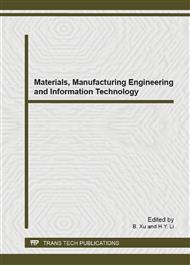[1]
Harden C P. Soil erosion and sustainable mountain development: experiments, observations, and recommendations from the Ecuadorian Andes[J]. Mountain Research and Development, 2001, 21(1): 77-83.
DOI: 10.1659/0276-4741(2001)021[0077:seasmd]2.0.co;2
Google Scholar
[2]
Harden C P. Soil erosion and sustainable mountain development: experiments, observations, and recommendations from the Ecuadorian Andes[J]. Mountain Research and Development, 2001, 21(1): 77-83.
DOI: 10.1659/0276-4741(2001)021[0077:seasmd]2.0.co;2
Google Scholar
[3]
Dax T. Endogenous development in Austria's mountain regions: From a source of irritation to a mainstream movement[J]. Mountain research and development, 2001, 21(3): 231-235.
DOI: 10.1659/0276-4741(2001)021[0231:ediamr]2.0.co;2
Google Scholar
[4]
Godde, Pamela M., Martin F. Price, and F. Friedrich M. Zimmerman, eds. Tourism and development in mountain regions [electronic resource]. CABI, (2000).
Google Scholar
[5]
Dax T. Research on mountain development in Europe, Overview of issues and priorities[C]/Innovative Structures for the Sustainable Development of Mountainous Areas, Proceedings of the ISDEMA Conference in Thessaloniki, Greece. 2002, 2: 66-76.
Google Scholar
[6]
Zheng, Du, Qingsong Zhang, and Wu Shaohong Wu, eds. Mountain geoecology and sustainable development of the Tibetan Plateau. Vol. 57. Springer, (2000).
Google Scholar
[7]
Kisioglu P, Topcu Y I. Applying Bayesian Belief Network approach to customer churn analysis: A case study on the telecom industry of Turkey[J]. Expert Systems with Applications, 2011, 38(6): 7151-7157.
DOI: 10.1016/j.eswa.2010.12.045
Google Scholar
[8]
Farmani R, Henriksen H J, Savic D, et al. An evolutionary Bayesian belief network methodology for participatory decision making under uncertainty: An application to groundwater management[J]. Integrated Environmental Assessment and Management, 2012, 8(3): 456-461.
DOI: 10.1002/ieam.192
Google Scholar
[9]
Stojadinovic A, Eberhardt J S, Ward E B, et al. Clinical Decision Support and Individualized Prediction of Survival in Colon Cancer: Bayesian Belief Network Model[J]. Annals of surgical oncology, 2013, 20(1): 161-174.
DOI: 10.1245/s10434-012-2555-4
Google Scholar
[10]
Liao Y, Wang J, Guo Y, et al. Risk assessment of human neural tube defects using a Bayesian belief network[J]. Stochastic Environmental Research and Risk Assessment, 2010, 24(1): 93-100.
DOI: 10.1007/s00477-009-0303-5
Google Scholar


